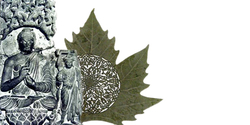
Avatamsaka Sutra, "Flower Adornment Sutra": its full name is "The Great Means Expansive Buddha Flower Adornment Sutra" and in Sanskrit: महावैपुल्यबुद्धावतंसकसूत्र . It is one of the most important sutras in Mahayana Buddhism. It is regarded by many Mahayana schools as the king of all sutras that propagate the perfect teaching of sudden awakening.
Principles
"The Great Means Expansive Buddha Flower Adornment Sutra," the title utilizes both dharma analogy and cause and effect. The title has encompassed the elements of principle, wisdom, person and dharma. "Great" means encompassing. "Means" represents methods or exemplifying rules and standards. "Expansive" means pervading and permeating. Together, these three words represents the substance function of the Single Mind Dharma Realm, vast and unbounded, hence the name. “Buddha” is one who enters the great means expansive limitless Dharma Realm. “Flower” is an analogy of tens of thousands of virtues and causal conducts come to fruition. Adornment is the tens of thousands casual conducts in demonstration to adorn the fruition of buddhahood. Thus, it is called Buddha flower adornment.
This sutra illustrates the fundamental Dharma Wheel. It is the mother of all sutras, with deep and profound principles. It takes “Vairochana Buddha’s Dharma body” as the fruition, “Ten Oceans of Lotus Treasury World Systems” as the dependent retributions, “Universal Worthy’s Compassionate Vow” as the one’s causal practices, and lastly it takes the perfectly fused, unobstructed great Dharmas in inexhaustible sets of ten appearing one after another” as a Bodhisattva's Dharma-doors of cultivation. All of these are used to express and reveal the states of Flower Treasury.
Principles
"The Great Means Expansive Buddha Flower Adornment Sutra," the title utilizes both dharma analogy and cause and effect. The title has encompassed the elements of principle, wisdom, person and dharma. "Great" means encompassing. "Means" represents methods or exemplifying rules and standards. "Expansive" means pervading and permeating. Together, these three words represents the substance function of the Single Mind Dharma Realm, vast and unbounded, hence the name. “Buddha” is one who enters the great means expansive limitless Dharma Realm. “Flower” is an analogy of tens of thousands of virtues and causal conducts come to fruition. Adornment is the tens of thousands casual conducts in demonstration to adorn the fruition of buddhahood. Thus, it is called Buddha flower adornment.
This sutra illustrates the fundamental Dharma Wheel. It is the mother of all sutras, with deep and profound principles. It takes “Vairochana Buddha’s Dharma body” as the fruition, “Ten Oceans of Lotus Treasury World Systems” as the dependent retributions, “Universal Worthy’s Compassionate Vow” as the one’s causal practices, and lastly it takes the perfectly fused, unobstructed great Dharmas in inexhaustible sets of ten appearing one after another” as a Bodhisattva's Dharma-doors of cultivation. All of these are used to express and reveal the states of Flower Treasury.
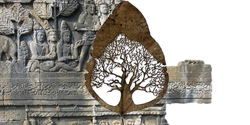
The full title of the Shurangama Sutra is “Sūtra on the Shurangama Mantra That Is Spoken from above the Crown of the Great Buddha’s Head, and on the Hidden Basis of the Thus-Come Ones’ Myriad Bodhisattva-Practices That Lead to Their Verifications of Ultimate Truth.” This sutra was brought to China by Master Pramiti during the Tang Dynasty. Its Chinese translation was verified by Master Huaidi. Chinese translation was then edited and polished by Fang Yong.
Principles
Among the Three Treasuries of Buddhist Canon and the Twelve Divisions Based on Content and Style, the Shurangama Sutra is the only sutra that clearly indicates the fifty types of demonic states a Chan cultivator may encounter. This is the reason why Shurangama Sutra is deemed as a gem of the Chan School. The sutra is the symbol of proper Dharma. When Buddha Dharma is about to perish, this sutra is the first to disappear. Shurangama Sutra is the secret key to the Door of Chan and it is also the main heading that reveals Chan teaching. When ordinary person cultivates according to its teachings, this person’s ordinary heart will transform into sagely wisdom. This person will be certified by Bodhisattvas and will be able to transform and liberate beings of all levels of potential. As a result, this person will to return the beings to the Buddhas’ vehicle.
Elder Master Hsu Yun once said, “All disciples of the Buddha should read the Shurangama Sutra.” From this, we can understand the importance of the Shurangama Sutra.
Principles
Among the Three Treasuries of Buddhist Canon and the Twelve Divisions Based on Content and Style, the Shurangama Sutra is the only sutra that clearly indicates the fifty types of demonic states a Chan cultivator may encounter. This is the reason why Shurangama Sutra is deemed as a gem of the Chan School. The sutra is the symbol of proper Dharma. When Buddha Dharma is about to perish, this sutra is the first to disappear. Shurangama Sutra is the secret key to the Door of Chan and it is also the main heading that reveals Chan teaching. When ordinary person cultivates according to its teachings, this person’s ordinary heart will transform into sagely wisdom. This person will be certified by Bodhisattvas and will be able to transform and liberate beings of all levels of potential. As a result, this person will to return the beings to the Buddhas’ vehicle.
Elder Master Hsu Yun once said, “All disciples of the Buddha should read the Shurangama Sutra.” From this, we can understand the importance of the Shurangama Sutra.
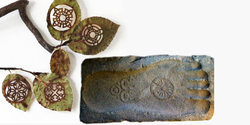
Wonderful Dharma Flower Sutra is commonly abbreviated as the Dharma Flower Sutra. Its Sanskrit is सद्धर्मपुण्डरीकसूत्र (Pronunciation: Sad-dharma), translated into Chinese as wonderful Dharma. This sutra was spoken in the later years of Shakyamuni Buddha’s life. This teaching belongs to the Perfect Teching that open up the provisional and then lead to the revelation of the actual. The perfect teaching encompasses great and small vehicle. It is a one-vehicle ultimate teaching which shows that everyone can become a Buddha. According to the Tian-Tai School's five-period classification of Buddha's teaching, the Lotus Sutra was classified as the last period, that of the Dharma Flower and Nirvana.
Principles
The Venerable Master lectured “Wonderful Dharma Flower Sutra” every evening for two years straight, totaling 350 plus lectures. The ceremony was completed on November 10, 1970. This Sutra explains, “All Buddhas, the World-Honored Ones, appear in the world because of one great cause and condition, which is "to disclose, indicate, and awaken the Buddha’s treasury of truth to sentient beings then to lead them into the treasury.”
Principles
The Venerable Master lectured “Wonderful Dharma Flower Sutra” every evening for two years straight, totaling 350 plus lectures. The ceremony was completed on November 10, 1970. This Sutra explains, “All Buddhas, the World-Honored Ones, appear in the world because of one great cause and condition, which is "to disclose, indicate, and awaken the Buddha’s treasury of truth to sentient beings then to lead them into the treasury.”

The Sixth Patriarch’s Platform Sutra, also known as, “the Incense Sutra” and “The Sixth Patriarch’s Dharma Jewel Platform Sutra”. This Sutra includes the words of the Sixth Patriarch and was recorded and compiled by his disciple, Fa Hai (Dharma Ocean). This is the only original work in Chinese Buddhism titled as a “sutra”.
Principles
The Venerable Master lectured on the Sixth Patriarch Sutra every afternoon, from August 4th until September 12th in 1969. The Chan School is characterized by special transmissions without scriptures. It is not based on any written words. The idea is to directly reach people’s minds so that they can fully understand the mind, see the true nature, and realizing Buddhahood. The Sixth Patriarch Sutra emphasizes that livings beings are Buddhas, and there are no differences in their Buddha natures. If one uses this mind, one will directly become a Buddha. Apart from the mind, there are no other Buddhas.
Principles
The Venerable Master lectured on the Sixth Patriarch Sutra every afternoon, from August 4th until September 12th in 1969. The Chan School is characterized by special transmissions without scriptures. It is not based on any written words. The idea is to directly reach people’s minds so that they can fully understand the mind, see the true nature, and realizing Buddhahood. The Sixth Patriarch Sutra emphasizes that livings beings are Buddhas, and there are no differences in their Buddha natures. If one uses this mind, one will directly become a Buddha. Apart from the mind, there are no other Buddhas.
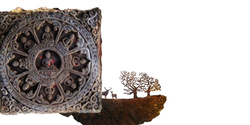
The current circulated version of the Sutra of the Past Vows of Earth Store Bodhisattva was translated by Master Shikshananda during the Tang Dynasty. The Sutra includes Earth Store Bodhisattva’s past vows, merits, and his stories of filial piety to his mothers in past lives. This is why the people of virtue in the past called the Earth Store Sutra the sutra of filial piety in Buddhism.
Principles
Earth Store has the deepest affinities with Pure Land since distant past. The Eighth Patriarch, Master Lian Chi, wrote the Prologue to The Sutra of the Past Vows of Earth Store Bodhisattva to encourage circulation of the sutra. The Ninth Patriarch, Master Ou Yi, spent his whole life paying respect to, praising and advocating for Earth Store Bodhisattva. Master Ou Yi lived in Mount Jiuhua for a very long time and called himself the minister in whom Earth Store could entrust his heir. Master Ou Yi devoted himself in bowing the Earth Store Repentance and upheld the Earth Store True Words to repent for eradicating karmic obstacles and being reborn in the Land of Ultimate Bliss.
Another great master of Pure Land School, Yin Guang, taught that those who uphold Buddha’s name and seek rebirth in the Western Pure Land must first believe in cause and effect and refrain from all evil acts while practicing all good deeds. Only then can they utilize the power of the Buddha’s great compassion and be reborn in the Pand Land with their karma. The Earth Store Sutra explains in great details cause and effects and retributions.
Starting November 16, 1968, the Venerable began the lectures on The Past Vows of Earth Store Bodhisattva on Saturdays. This series of lectures was completed on September 29, 1969.
Principles
Earth Store has the deepest affinities with Pure Land since distant past. The Eighth Patriarch, Master Lian Chi, wrote the Prologue to The Sutra of the Past Vows of Earth Store Bodhisattva to encourage circulation of the sutra. The Ninth Patriarch, Master Ou Yi, spent his whole life paying respect to, praising and advocating for Earth Store Bodhisattva. Master Ou Yi lived in Mount Jiuhua for a very long time and called himself the minister in whom Earth Store could entrust his heir. Master Ou Yi devoted himself in bowing the Earth Store Repentance and upheld the Earth Store True Words to repent for eradicating karmic obstacles and being reborn in the Land of Ultimate Bliss.
Another great master of Pure Land School, Yin Guang, taught that those who uphold Buddha’s name and seek rebirth in the Western Pure Land must first believe in cause and effect and refrain from all evil acts while practicing all good deeds. Only then can they utilize the power of the Buddha’s great compassion and be reborn in the Pand Land with their karma. The Earth Store Sutra explains in great details cause and effects and retributions.
Starting November 16, 1968, the Venerable began the lectures on The Past Vows of Earth Store Bodhisattva on Saturdays. This series of lectures was completed on September 29, 1969.
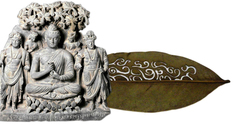
The Buddha Speaks of Amitabha Sutra is one of the Mahayana sutras. It is respected by the Pure Land School and known as one of the three Pure Land sutras. This sutra is one of the extremely rare sutras in which the Buddha speaks without having been asked by his disciples.
The first half of the sutra talks about the various adornments of the Western Land of Ultimate Bliss, the origin and meaning of Amitabha’s name. The latter half urges living beings to recite Amitabha’s name in order to be reborn in the Western Land of Ultimate Bliss. Lastly, the sutra listed the Buddhas in the six quarters—east, west, north, south, above and below. It ends by urging living beings to believe in Amitabha Buddha and the facts about his Land of Ultimate Bliss.
Principles
What powers and effects does this “Buddha Speaks of Amitabha Sutra” have? Its power is non-retreating. Its effect is rebirth. Once you are reborn into the Western Land of Ultimate Bliss, you will never turn back.
The first half of the sutra talks about the various adornments of the Western Land of Ultimate Bliss, the origin and meaning of Amitabha’s name. The latter half urges living beings to recite Amitabha’s name in order to be reborn in the Western Land of Ultimate Bliss. Lastly, the sutra listed the Buddhas in the six quarters—east, west, north, south, above and below. It ends by urging living beings to believe in Amitabha Buddha and the facts about his Land of Ultimate Bliss.
Principles
What powers and effects does this “Buddha Speaks of Amitabha Sutra” have? Its power is non-retreating. Its effect is rebirth. Once you are reborn into the Western Land of Ultimate Bliss, you will never turn back.
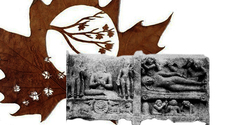
This sutra is consisted of only one scroll and was translated by Tripitaka Master Kumarajiva during the Later Qin Dynasty in the Kucha Kingdom. This Sutra was the Buddha’s last teaching before he entered Nirvana. It organized and summarized precepts and other teachings.
Principles
The Buddha hoped that all his disciples could cultivate and practice the Dharma with a proper mind and virtues as their principles. Cultivating in accord with the Dharma and precepts, one will be liberated from the sufferings of birth and death and afflictions.
Principles
The Buddha hoped that all his disciples could cultivate and practice the Dharma with a proper mind and virtues as their principles. Cultivating in accord with the Dharma and precepts, one will be liberated from the sufferings of birth and death and afflictions.
